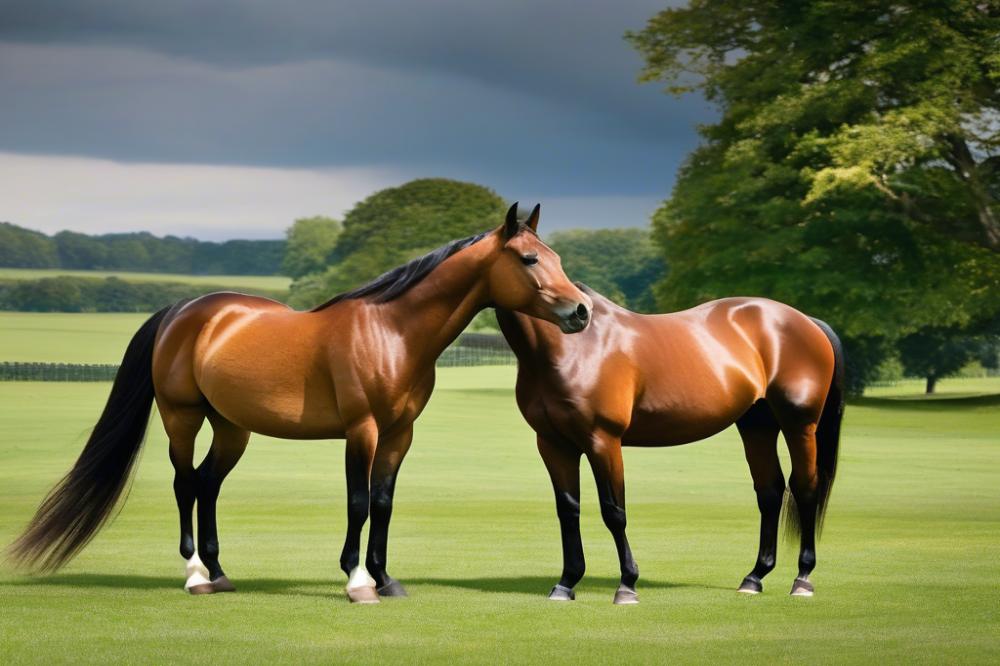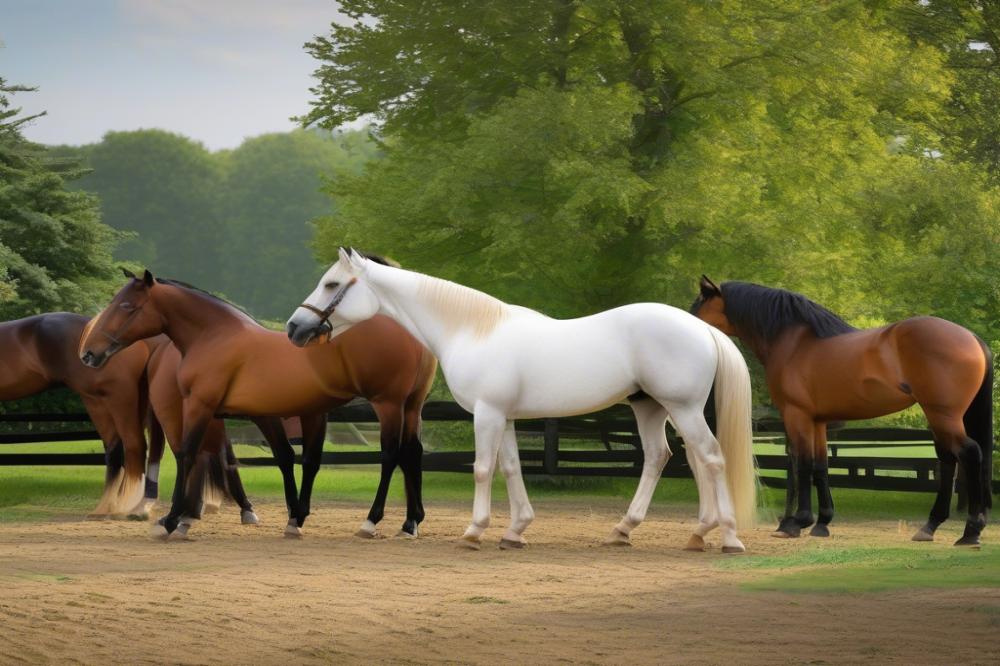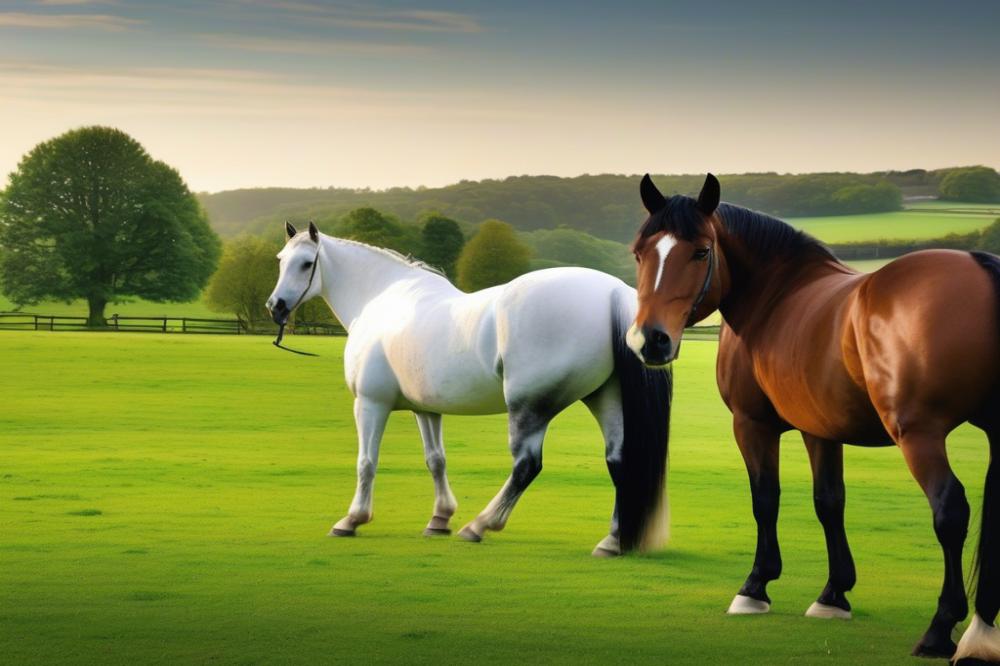The Role of bloodlines in successful breeding
Understanding bloodlines plays a vital role in the world of horse breeding. These family lines, or pedigrees, reveal the genetic background of horses. They help breeders know what traits may be passed down from one generation to the next. When examining a horse’s lineage, breeders can predict characteristics like speed, temperament, and health. These factors significantly affect a horse’s potential and performance.
The significance of bloodlines becomes clear when considering how genetics operate. Horses inherit traits from their parents. A foal’s potential is often determined by its sire and dam. For example, a foal born from champions tends to carry strong abilities. Hence, breeders often strive to pair horses with exemplary backgrounds. This intentional selection of breeding pairs enhances the chances of producing high-quality offspring.
Quality in breeding can never be overstated. By opting for horses with proven ancestry, breeders increase the likelihood of success. Breeding is not just about finding horses that look good together. It requires meticulous thought regarding DNA and hereditary patterns. Each decision made during breeding has long-lasting effects. Careful selection based on bloodlines helps create strong, well-adjusted horses that perform better in competitions.
Moreover, successful breeding practices require an awareness of what specific traits are advantageous for certain disciplines. For example, racehorses might benefit from speed and agility, while show horses might need to exhibit elegance and training ease. Bloodlines provide valuable insights into which traits a given horse may inherit. This knowledge allows breeders to make informed selections that align with their goals.
In conclusion, the importance of bloodlines in the breeding process cannot be ignored. They are essential for understanding genetic inheritance and predicting the future of the horses. Emphasizing bloodline analysis leads to improved breeding outcomes and a better chance of success in competitions.
Understanding Bloodlines

Bloodlines refer to the lineage or ancestry of a horse. They trace the genetic makeup of an animal back to its forebears. Horses often inherit traits from their parents and grandparents. This inheritance plays a vital role in their performance and appearance.
Establishing these lineages usually involves looking at pedigrees. A pedigree outlines a horse’s ancestry, detailing its parents, grandparents, and even great-grandparents. A well-documented pedigree can indicate the potential abilities and characteristics of a horse. By analyzing these records, breeders can make informed decisions about which horses to breed together.
genetics also plays a significant role. Each horse carries genes that dictate various traits, such as speed, temperament, and stamina. Variations within these genes can create horses that excel in specific disciplines, be it racing, show jumping, or dressage. Understanding these genetic factors helps breeders predict the offspring’s potential.
Reputable bloodlines matter greatly. The horses that come from well-respected lines often demonstrate superior qualities. Performance records and accomplishments of ancestors can greatly influence the perceived value of a horse. Exceptional lineage can lead to higher prices and increased interest from trainers.
Additionally, unique characteristics can emerge from certain bloodlines. Features such as coat color, size, and even disposition may be hereditary. Breeders who pay attention to these traits can better align their breeding goals with their desired outcomes.
Finally, the significance of an established bloodline cannot be overlooked. With a strong foundation, breeders can work toward producing horses that not only excel but also contribute positively to the breed. Those who appreciate the importance of lineage often see the fruits of their labor manifest in the horses they produce.
The Importance of Pedigree

Pedigree plays a key role in horse breeding. This term refers to the recorded ancestry of an animal. It acts like a family tree, displaying the lineage of the horse from its ancestors. Breeders use pedigree charts to identify the traits passed down through generations. These traits can include speed, temperament, and conformation. Knowledge of ancestry helps breeders make informed decisions.
Every pedigree is a map of inherited qualities. This helps predict how traits may appear in future foals. For example, if a horse’s parents excel in racing, the foal might inherit those skills. Thus, understanding lineage is vital for achieving specific breeding goals. Selective breeding relies heavily on pedigree to highlight desirable characteristics.
Furthermore, these charts contribute to breeding standards and practices. A well-documented pedigree can enhance a horse’s value in the market. Breeders seek horses with strong family histories, as this often translates to better performance. The importance of lineages is apparent in competitions and sales.
To maintain high breeding standards, careful consideration is necessary. Breeders evaluate each horse’s pedigree before making choices. They look for genetic diversity, but also for successful ancestors. This balance helps avoid issues related to inbreeding. Effective breeding requires diligence and attention to detail regarding lineage.
Some breeders also share pedigree information to connect with others. This exchange fosters a community dedicated to improving overall quality in horse breeding. Awareness of both strengths and weaknesses in a pedigree allows for better breeding strategies. Pedigree serves not just as a record but as a guide for future breeding endeavors. An understanding of these ancestral connections is essential for every serious breeder.
Genetics and Hereditary Traits

Genetics plays a crucial role in horse breeding. Each horse inherits traits from its parents. These traits can include physical characteristics, temperament, and performance abilities. Understanding these genetic principles is essential for breeders aiming for specific outcomes.
At the core of genetics is the concept of genes. Genes are segments of DNA that determine how certain traits are expressed. Each horse carries two copies of each gene, one from each parent. The combination of these genes results in various hereditary traits. Some traits are straightforward, like coat color, while others, such as jumping ability, can be more complex.
Specific traits often follow patterns of inheritance. Dominant genes can mask the effects of recessive ones. If a horse inherits a dominant gene for a certain color, it will display that color even if it has a recessive gene for a different shade. This is essential when selecting potential breeding stock.
Recognizing the significance of hereditary traits helps breeders make informed decisions. For instance, if a horse consistently produces foals with strong athletic abilities, it’s wise to consider these traits when planning future pairings. Not all horses will produce desirable traits, but selecting parents with proven hereditary characteristics often improves the chances of success.
Litter sizes can also be influenced by genetics. Some bloodlines may produce larger foal crops, while others might consistently yield smaller ones. Breeders need to evaluate these factors carefully when determining which horses to pair. A thorough understanding of the genetic background of each horse contributes significantly to achieving desired results.
Even subtle factors can affect genetic outcomes. Traits like temperament or trainability may be inherited but can also be influenced by the environment. Balancing genetics and upbringing is critical. Breeders should not only consider a horse’s pedigree but also how it has been raised and trained.
Overall, knowledge of genetics provides valuable insights for horse breeding. Focusing on specific traits can guide breeders in creating horses that excel in various disciplines. By understanding how genes operate and influence horses, breeders can enhance the potential of their breeding programs. This awareness allows for better decisions in selecting mares and stallions that align with their goals.
Breeding Standards and Best Practices
Breeding standards in the equine industry are essential for maintaining quality and enhancing performance. These guidelines help set expectations for traits like conformation, temperamental qualities, and athletic ability. Many organizations have established criteria that breeders must follow. These standards vary depending on the type of horse, such as show horses, racehorses, or working horses.
Evaluating bloodlines involves comparing individual horses against these established criteria. Assessors look for specific traits that indicate potential for success. They consider factors like lineage, performance history, and hereditary health issues. This assessment helps breeders make informed decisions about mating pairs. Close attention is paid to a horse’s pedigree to determine its strengths and weaknesses in relation to the standards.
Some best practices guide animal selection. Start by reviewing the horse’s ancestry. Choosing animals with proven performance in related fields can lead to better outcomes. Analyze traits such as speed, jumping ability, and temperament. Selecting based on a blend of factors often yields the best results. Breeders should also consider genetic diversity to reduce health problems associated with in-breeding.
Assessing physical characteristics is equally important. Confirm that both potential parents meet or exceed the established standards. Horses should exhibit strong conformation, solid hoof health, and overall vitality. This physicality often indicates better prospects for offspring. Breeders often consult with experts in the field to confirm their evaluations.
Utilizing technology can enhance decision-making in the breeding process. Genetic testing offers insight into hereditary traits. Traits affecting performance and health can be tracked through advancements in science. This makes for a more accurate prediction of a horse’s capabilities, which ultimately aligns with breeding standards.
Taking time to consider the overall breeding plan is crucial. It is wise to align breeding goals with the desired outcome. Factors like the horse’s age and health also play a role in the decision-making process. The utmost attention to detail at this stage can lead to long-term success.
In summary, adherence to breeding standards and meticulous evaluation practices sets the foundation for successful breeding. Breeders who apply these techniques increase their chances of producing exceptional horses. By focusing on quality and performance, the equine industry can thrive.
Selective Breeding Techniques
Selective breeding is a method that relies heavily on genetic information. Breeders analyze data from various bloodlines to make smart choices. Understanding genetic traits helps them predict how future animals will perform. Knowledge of desirable qualities is key in this process. Each decision can affect the success of a breeding program.
Genetic testing provides a clearer picture of an animal’s potential. By checking DNA, breeders learn what traits are likely to pass on. This information aids in pairing animals with the best chances of producing strong offspring. There are various traits to consider, including health, size, and behavior.
Planning is critical when it comes to breeding. A well-thought-out strategy saves time and resources. It involves considering genetic compatibility, as well as the qualities each parent possesses. The goal is to mix traits that will lead to better results.
Record-keeping plays an important role in selective breeding. Breeders maintain detailed logs of each animal’s lineage. Tracking inheritance patterns helps them avoid potential genetic issues. A strong record allows for informed decisions in future pairings.
Moreover, breeders often participate in community networks. These networks share insights and advice about the best practices in breeding. Access to shared knowledge can help improve techniques and outcomes. Collaborating with others can uncover new ideas and methods.
Using software programs can also aid in managing genetic data. Many breeders utilize technology to visualize relationships between animals. These tools simplify complex information and highlight optimal pairings. As a result, breeders can make decisions based on solid analysis.
Ultimately, the combination of strategy, record-keeping, and technology creates a solid foundation. Successful breeding relies on careful examination of each animal’s potential. Understanding genetics is not just about creating good traits; it is about planning for the future.
Challenges and Considerations
Focusing heavily on lineage in breeding can lead to significant challenges. Inbreeding is one concern that breeders often face. It occurs when closely related animals are mated, which can result in genetic problems. These issues might include physical deformities or health conditions that could have been avoided.
Another aspect to consider is genetic diversity. Maintaining a varied gene pool is crucial for healthy offspring. Without diversity, animals can become less resilient. They may struggle against diseases or environmental changes. Therefore, a balanced approach is necessary.
The potential for undesirable traits also exists when breeding is solely based on lineage. Traits that are seen as valuable might come with risks. For example, an animal praised for its size might inherit issues related to joint health. Such complications can be detrimental to both the animal and the breeding goals.
Breeders should strive to balance bloodline selection with the overall health of the animal. Selecting for specific traits is important, but this cannot come at the expense of well-being. Quality in breeding means looking beyond just the pedigree. It involves careful assessment of each animal’s health status and genetic strengths.
All things considered, it is vital to look at the bigger picture. Successful breeding requires awareness of both advantages and pitfalls. A well-rounded approach leads to better outcomes in the long run.
Final Thoughts on Breeding Success
The impact of lineage in horse breeding cannot be overstated. Genetics plays a fundamental role in determining traits that can enhance a horse’s performance, temperament, and overall quality. Each horse carries a mix of genes inherited from its ancestors, making understanding this genetic backdrop vital for breeders.
A solid pedigree provides valuable insights into the potential of a horse. Breeders can analyze past champions and their qualities to make informed decisions. Those who ignore this crucial detail may find themselves facing challenges that could have been avoided with careful planning.
Selective breeding techniques are essential tools for achieving desired outcomes. By pairing horses with complementary traits, breeders can cultivate offspring that are more likely to excel in various disciplines. This intentional strategy not only improves performance but also helps maintain the integrity of the breed.
Encouraging responsible breeding practices is essential for the advancement of equine quality. With great responsibility comes the opportunity to foster a sustainable future for horse breeding. One must consider the long-term effects of their choices, as each generation builds upon the previous one.
In summary, understanding bloodlines remains central to successful breeding efforts. The intricate dance of genetics, pedigree, and careful selection forms the foundation of excellent horse breeding. As we move forward, fostering ethical practices will elevate the standards and well-being of horses everywhere.



